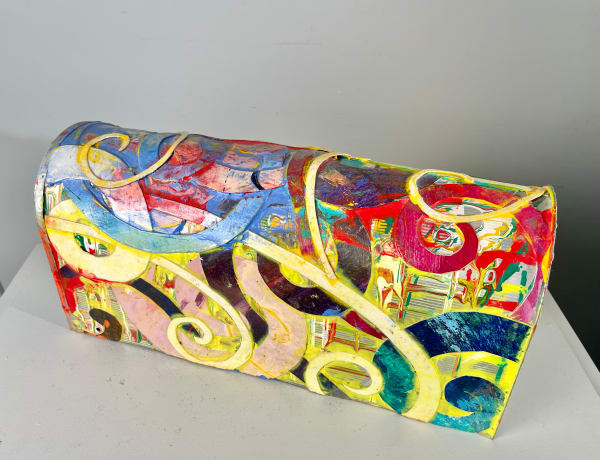Born in Detroit in 1935, Al Loving studied painting at the University of Michigan, Ann Arbor. In 1968, Loving relocated to New York, where he found himself among a social milieu which included artists Robert Duran, Alan Shields, Howardena Pindell, Richard Van Buren, and the dancer and choreographer Batya Zamir. A year later, in 1969, Loving famously became the first African-American to have a one-person show at the Whitney Museum of American Art.
Unlike many African-American artists whose art focused on the racial politics of the era, Loving was a staunch abstractionist. His early works were built upon strict yet simple geometric shapes—often hexagonal or cubic modules. Inspired by Hans Hoffmann (who taught Loving’s mentor Al Mullen), Loving concentrated on the tension between flatness and spatial illusionism. In the 1970s the artist became disenchanted with his earlier, hard-edge geometric paintings. Loving dispensed with notions of centralized composition, figure/ground separation, and pictorial frame in his later torn canvas and collaged paper works. He combined hundreds of pieces of cut and torn canvas or paper into an abundance of overlapping patterns and shapes, their rich and intuitive array of colors stretch irregularly, spiraling outward, surrounding the space, and engulfing the viewer.




